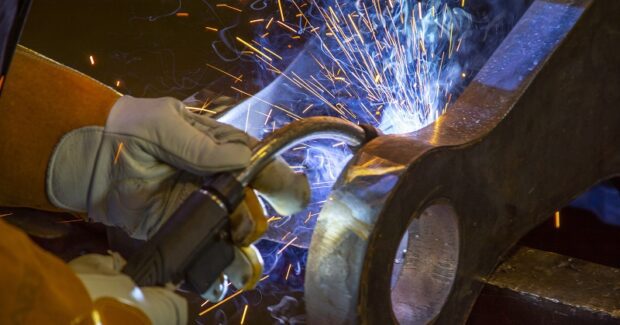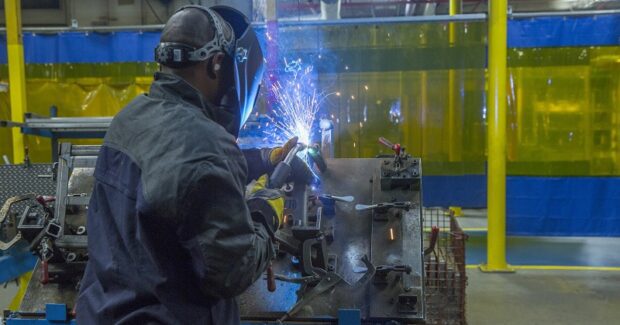Misconceptions About Filler Metal Strength
Selecting the proper filler metals for a given welding application can be difficult and confusing. To better understand what impacts filler metal strength, consider these four common misconceptions, along with guidelines to rectify them.
Posted: October 8, 2019
Filler metals are an integral part of the welding process, but their selection can often cause confusion. Determining the required filler metal strength for the application can be especially difficult, particularly since factors such as weld design and base material properties must be considered. To better understand what impacts filler metal strength, consider these four common misconceptions, along with guidelines to rectify them.
MISCONCEPTION ONE: A FILLER METAL WITH A HIGHER TYPICAL TENSILE STRENGTH IS BEST
Stronger isn’t necessarily better when selecting a filler metal. The American Welding Society (AWS; Miami, FL) has established standards that guide the manufacturing and intended use of welding wires and stick electrodes. These are provided to users in the form of filler metal classifications, which include information on tensile strength. Data sheets produced by filler metal manufacturers also provide usability information, but in many cases the typical tensile strength listed will be higher than what AWS requires for a particular welding wire or stick electrode classification. For example, an AWS E71T-1 gas-shielded flux-cored wire may meet an AWS tensile strength spec of 70 ksi (1,000 lb/sq in), but the filler metal manufacturer rates it at 84 ksi with 100 percent CO2 or 90 ksi with 75 percent argon and 25 percent CO2. That is because filler metal manufacturers create products that either meet or exceed AWS requirements. Consider it a factor of safety (FoS) or added assurance during the development process.
With this in mind, it is important to look at the AWS classification as the guiding principle for weld design, as opposed to the typical tensile strength value on a data sheet, to determine the appropriate filler metal strength.
MISCONCEPTION TWO: CERTAIN TYPES OF FILLER METALS ARE INHERENTLY STRONGER
The chosen welding process comes down to the available equipment and the application, among other factors, but that doesn’t mean there aren’t varying perceptions of the filler metal used or the finished weld. For example, it’s not uncommon to hear that a weld made with flux-cored welding wire is stronger than a solid wire weld or that a solid wire isn’t as strong as a stick electrode. The reality is that when comparing two filler metals that have the same AWS tensile strength – for instance, comparing a 70 ksi stick electrode with a 70 ksi solid wire – the minimum AWS tensile strength is the same. The difference in perceived weld strength comes down to how the different weld processes are implemented in specific applications. For instance, the current or heat input in the welding process needs to match the thickness of the material being welded. If an operator uses a short-circuit process with solid wire to weld half-inch-thick material, the result will likely be a weaker weld. Here, a spray process would be the better choice to achieve proper weld strength with a solid wire.
MISCONCEPTION THREE: SHIELDING GAS AND HEAT INPUT DON’T AFFECT FILLER METAL STRENGTH
Filler metals are formulated for use with a specific shielding gas or shielding gas mixture to meet the required AWS mechanical properties. In particular, shielding gases affect the tensile strength of the filler metal, as well as the Charpy V-notch impact values. Shielding gas mixtures with more argon typically allow filler metals to produce welds with higher tensile strength and yield strength. These welds, however, are less ductile. The opposite holds true for higher levels of CO2 in a shielding gas mixture. CO2 improves the weld’s ductility but lowers tensile and yield strength. Filler metal manufacturers provide recommended balances of argon and CO2 for filler metals for a given strength outcome. Like higher argon content, low heat inputs can help increase weld strength but reduce ductility. High heat inputs act the same as high CO2 on strength. Balancing out heat and shielding gas can help operators gain the desired strength from their filler metal for the finished weld.
For example, a welding operator may choose to use a higher argon level in an application where high heat input has decreased the strength of the weld.
MISCONCEPTION FOUR: THE FILLER METAL STRENGTH ALWAYS NEEDS TO MATCH THE BASE METAL
Many welding applications require matching or exceeding the filler metal tensile strength to the base material, per the weldment’s design requirements. The match in strength is not exact. For example, an operator could match A36 steel with minimum yield strength of 36 ksi to a filler metal with properties that are close to that strength. In this case, an AWS A5.XX 70 ksi tensile class filler metal providing 70 ksi minimum tensile strength and 58 ksi minimum yield strength would typically be a good option. Undermatching the strength of the filler metal to the base material is often done in applications where the design of the weldment does not need to meet the strength of the base material. Overmatching filler metal strength to a base material’s strength is not very common and is often discouraged. An exception is when the weld needs to meet a higher yield strength than is typical for a given tensile strength. This often occurs in weldments that are designed around yield strength instead of tensile strength.
Remember, selecting a filler metal for an application – and understanding the strength required to produce the desired weld – is a matter of being armed with the right information. When in doubt, always consult a trusted filler metal manufacturer and/or welding distributor for assistance.






